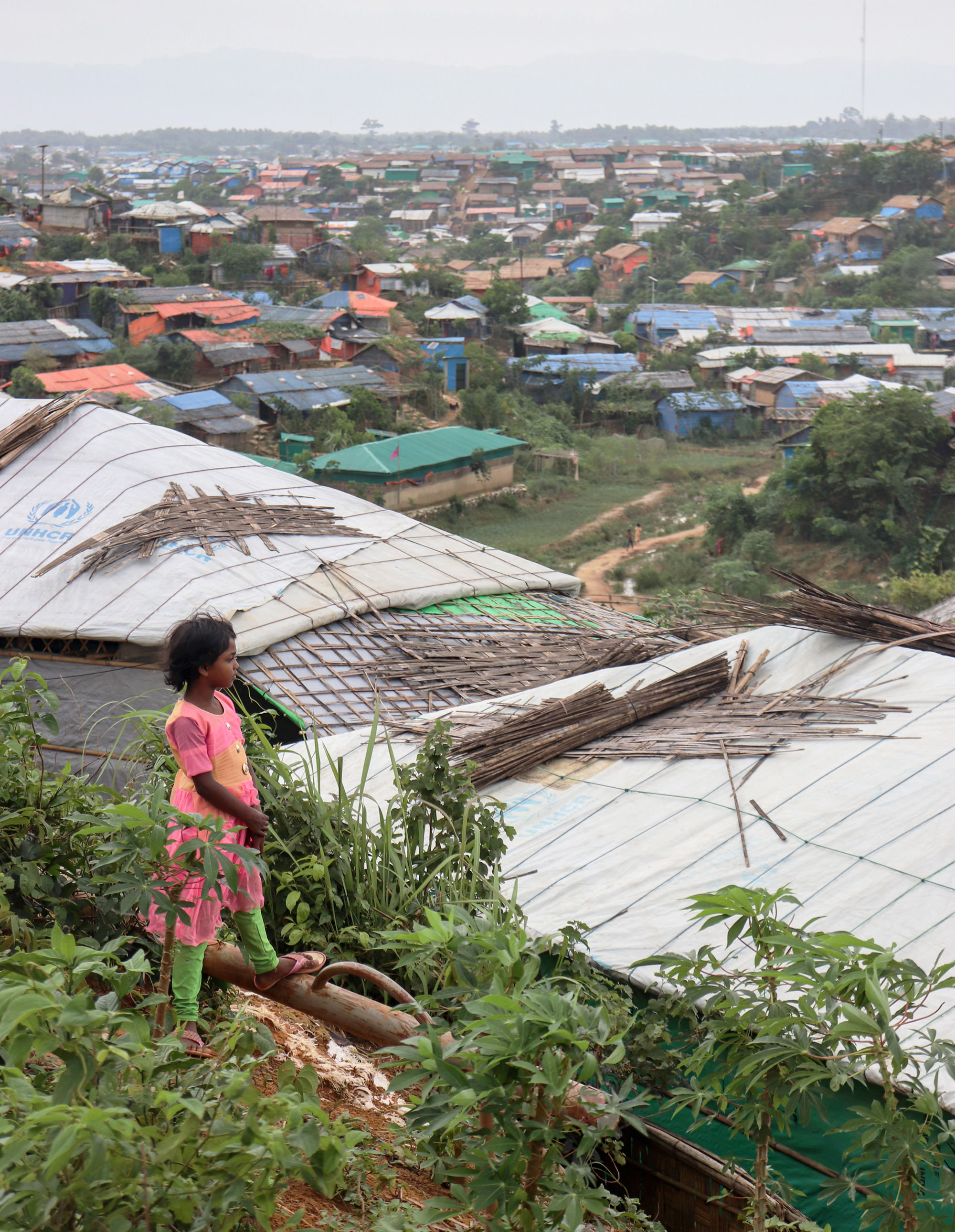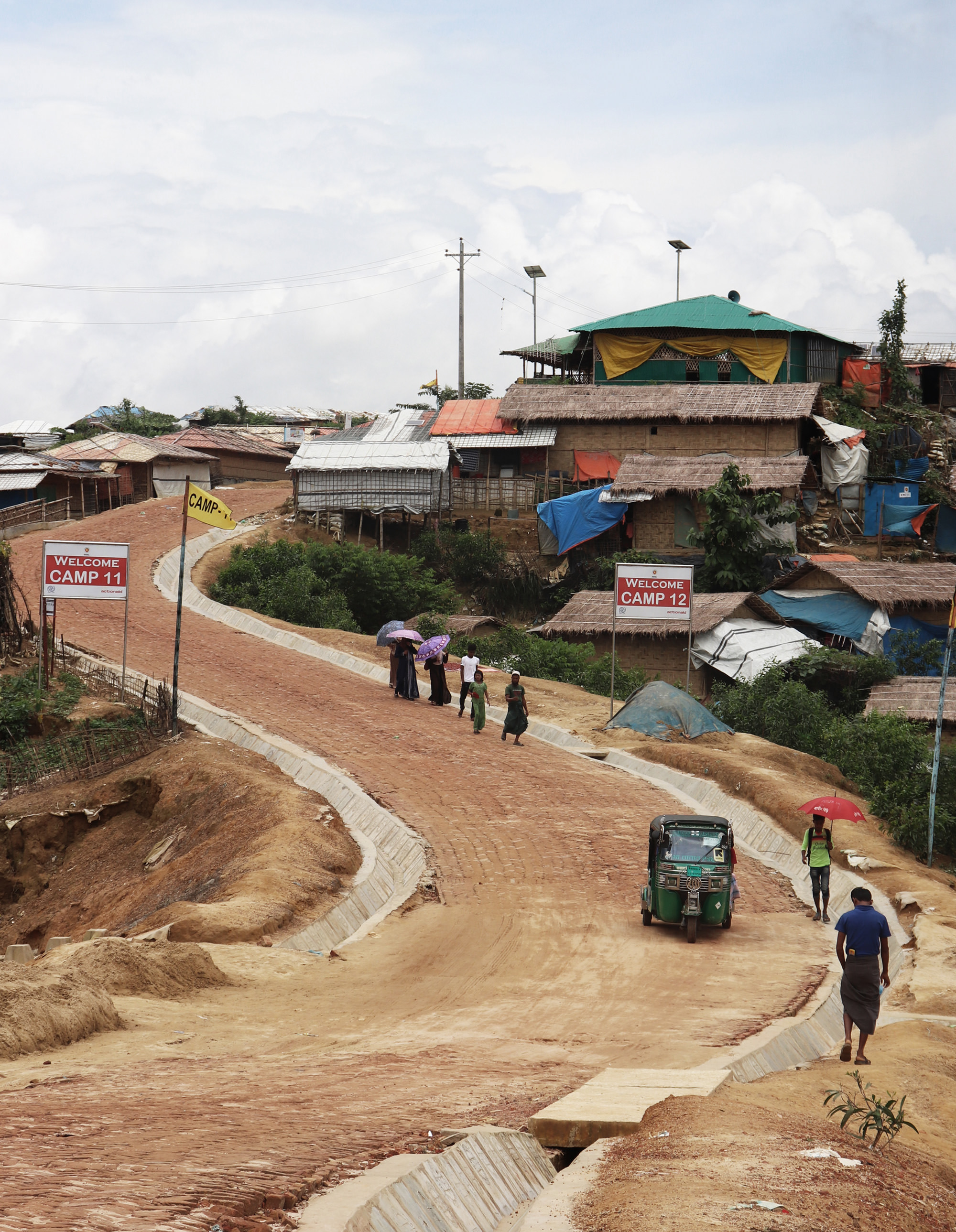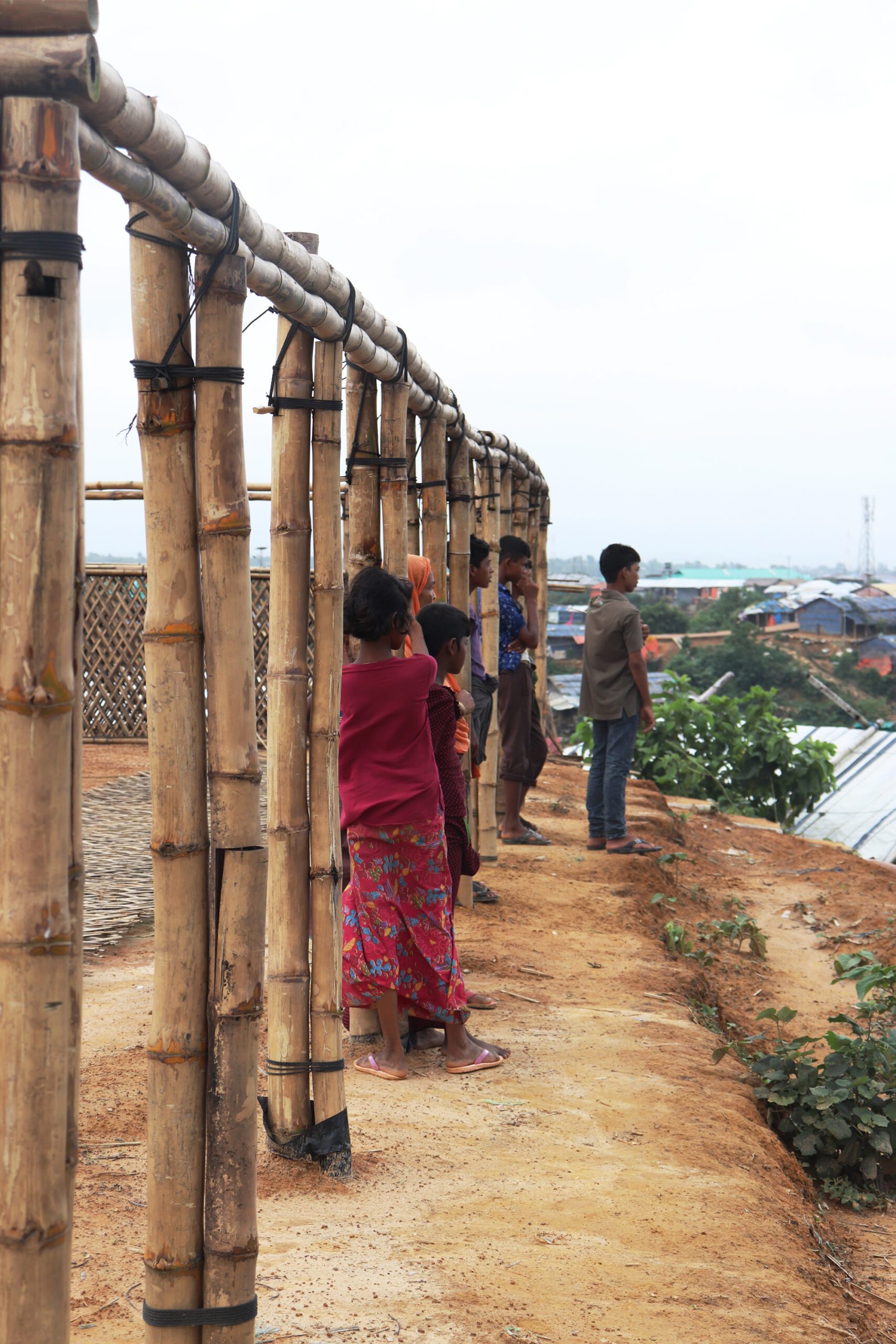By Tommy Schaperkotter, M. Arch Candidate ’20, Harvard Graduate School of Design
This summer I traveled to Bangladesh to conduct fieldwork in the Rohingya refugee camps located in the Ukhiya and Teknaf regions, adjacent to the country’s border with Myanmar. I am pursuing this research as a component of a publication and my master’s thesis, which addresses the architectural and urban patterns of refugee settlements created in the wake of forced migration that has engendered a humanitarian crisis heretofore unprecedented. This crisis is often explained as one of refugees, but not always as one of refuge, of architectural spaces where the voices, memories, and capabilities of people are held in abeyance, precluded from substantive participation in the creation of their own built environment.
The contemporary complexities of humanitarian urbanism are exhibited poignantly in the Rohingya refugee camps, one of which the United Nations has declared the largest and most densely populated refugee settlement in the world. By virtue of such statistics, the situation facing the Rohingya diaspora in Bangladesh has received much attention over the past two years. However, the stories are longer and more intricate than the ways in which they are often portrayed. Notable authors and journalists have thoroughly chronicled the conditions that precipitated the tragic events of 2017. I do not seek to replicate their work but to use a historical understanding of the community to bolster a contemporary analysis of the architectural and urban ecosystems within the camps.
While there, I conducted interviews, made observations, and collected visual documentation. I spoke with community leaders, including the co-chairmen of the Arakan Rohingya Society for Peace and Human Rights — an organization that has collected historical documentation regarding the status of Rohingya citizenship in Myanmar. I was invited into homes and public spaces where I heard the voices of wives, mothers, teachers, husbands, fathers, builders, daughters, sons, clinicians, and community organizers. Their stories weave an elaborate tapestry of the Rohingya community that is, unfortunately, too frequently obscured and rendered impersonal through the lens of humanitarian infrastructure.
I observed interactions between different groups co-existing in the camps: the military, host community, humanitarian actors, and refugees, both registered and unregistered. I witnessed the stewardship of healthcare, the distribution of supplies, the education of children, the construction of buildings, and a wedding. Throughout my time there, I obtained a collection of photography and video footage, ranging from expansive visualizations of urban and ecological conditions to intimate portraits of everyday activities.
My time there coincided with a shadow cast by the international debate over repatriation, an ongoing discussion that culminated on August 25, 2019, the two-year anniversary of the ethnic cleansing campaign directed toward the Rohingya in the Rakhine State of Myanmar. The community has labeled this date as “Genocide Remembrance Day.” The name underscores the precarious future facing not only the Rohingya, but minorities, refugees, and stateless communities the world over. This act of remembrance is also a plea to the global community, itself entangled in dreadful disputes over immigration. It is an appeal of coexistence, and a reminder that the degree to which we can celebrate, not merely tolerate, the diversity of this planet will be one of the defining challenges of this century.
In addition to the support of the Lakshmi Mittal and Family South Asia Institute, I am also grateful to my colleagues: Anna Heringer, architect, former Loeb Fellow, and visiting Harvard professor; Shaowen Zhang, former Aga Khan Research Fellow and current PhD candidate at Harvard University; as well as OBAT Helpers, a nonprofit organization based in the United States and Bangladesh; the Dipshikha organization; the Bengal Institute in Dhaka; the Refugee Relief and Repatriation Commission (RRRC); and all members of the Bangladeshi and Rohingya communities who demonstrated kindness and courage by sharing so much of themselves with me.
————–
Schaperkotter’s trip was supported by the Lakshmi Mittal and Family South Asia Institute. All photos taken and provided by Tommy Schaperkotter.




